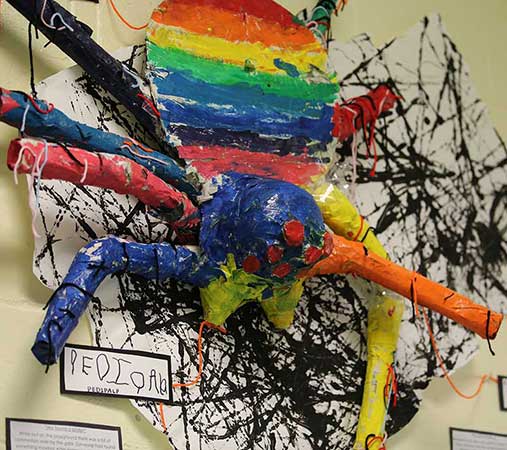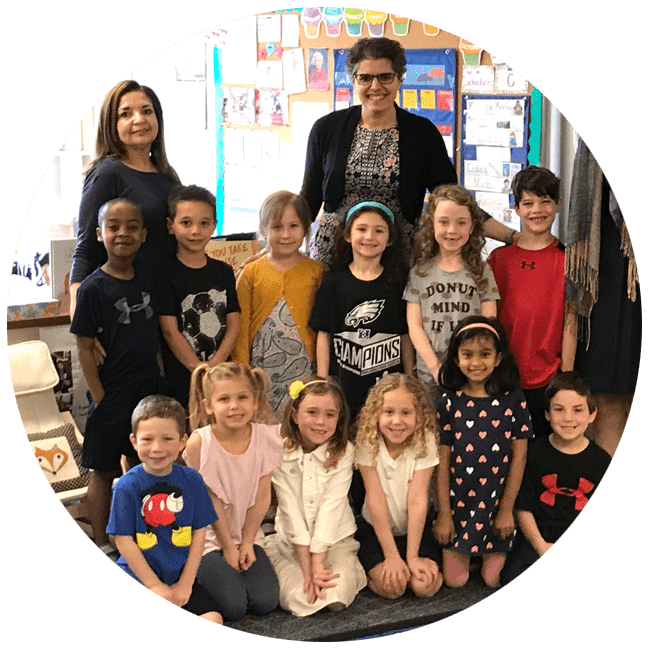
Prekindergarten Spider Collage
Prekindergarten Spider Curiosity Leads to Class Study
One day on the playground, Paige Bloom’s prekindergarten class discovered a Daddy Longlegs spider and was captivated by the arachnid. The class was equally fixated and excited when another spider was discovered in the classroom, and so an unexpected classroom unit studying spiders began.
“Whenever students saw spiders, they weren’t grossed out, but really interested,” said Ms. Bloom. “As a teacher, if my class wants to know something, it’s my job to figure out their questions and what they want to learn.”
Research and Exploration by Prekindergarteners
The students began their research by heading to the MFS library and reading books about spiders to begin to find some answers to their questions. Then, the students reviewed photos of insects and identified the characteristics that distinguish a spider from a bug. They learned the names and functions of the unique body parts of a spider, such as the abdomen, cephalothorax, and spinnerets.
To demonstrate their knowledge and work on fine motor skills, the students created spiders in a variety of ways. Some colored observational drawings while others molded clay models. A few prekindergarteners designed cobwebs with rubber bands on geoboards, drew chalk webs, or made “sticky” webs with paint. Ms. Bloom also created a cobweb of tape so students could strengthen their gross motor skills and toss a “bug prey” into the web to feed the spider.
“We learn through active participation in our projects,” said Ms. Bloom. “If you are physically creating something you are studying, through drawings, paintings, models, anything, you are able to truly understand the subject.”
With all these projects, students shared their spiders and cobwebs with the class to practice public speaking skills in a group setting. The prekindergarteners developed their abilities to formulate their thought process, clearly explain their thinking, and communicate their ideas to the group.
Eventually, the students decided that they wanted to make one class spider and web. In pairs, the students discussed design ideas for the huge class spider, but when they had trouble coming to consensus, one prekindergartener suggested a vote. The class then agreed that the colors for the spiders would be determined by the vote.
“Beyond understanding the general facts, my goal with these spider activities was for the students to be able to represent their knowledge, work well in groups, and define a plan,” said Ms. Bloom. “I want my students to be able to make their own decisions, discover new interests, be encouraged to pursue their interests, and voice their opinion.”
Schedule a Visit with Us
Learn more by a visit in person and meet with one of our excellent Early Childhood Program teachers.

